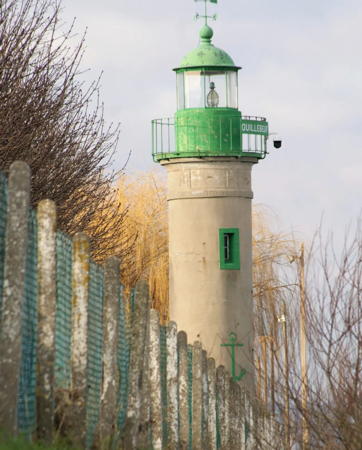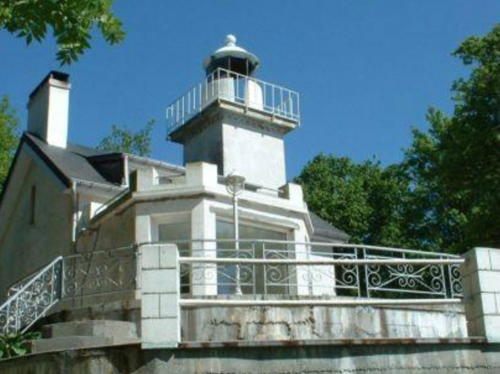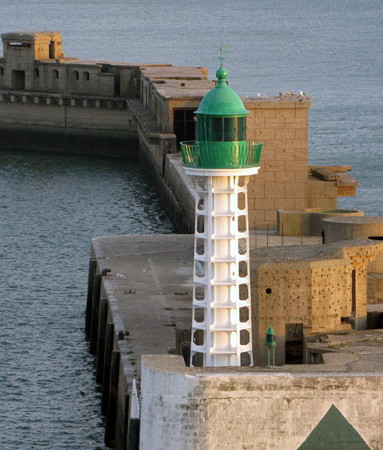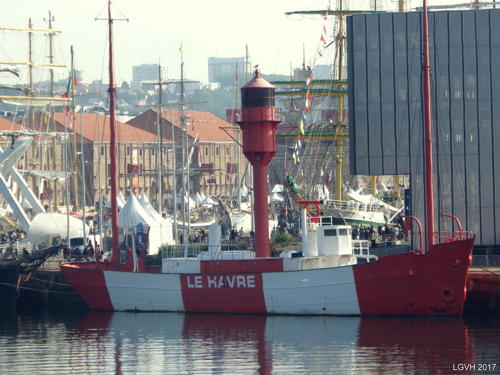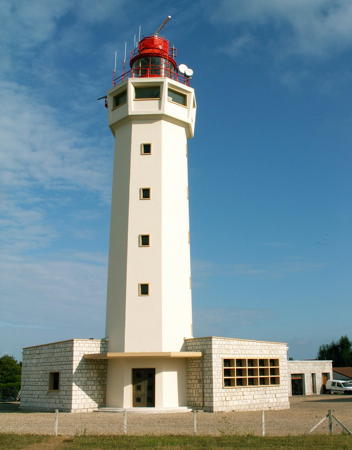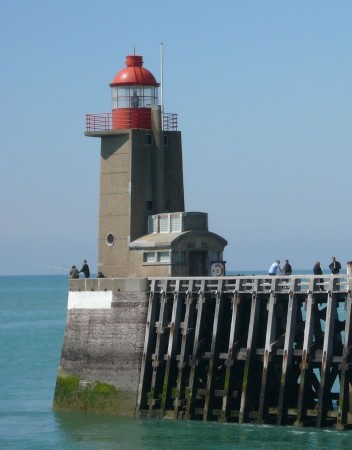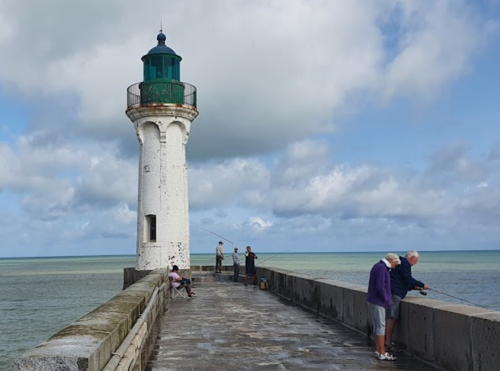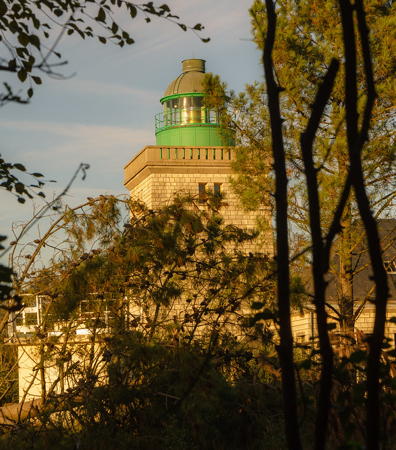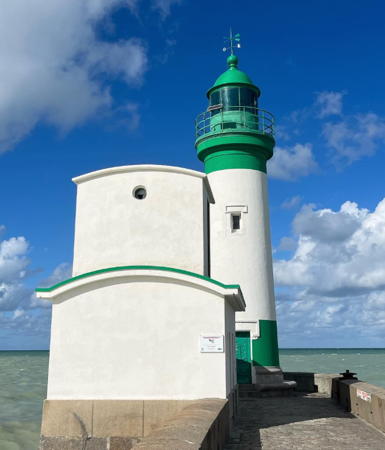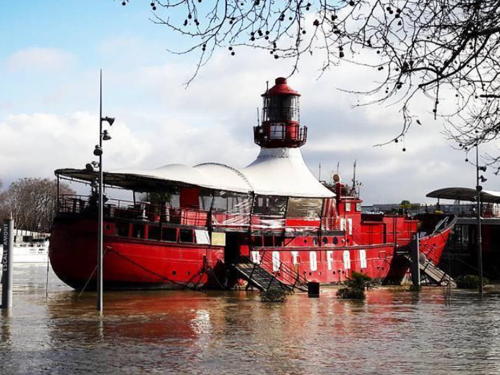France (officially the French Republic, République française) has coasts facing south on the Mediterranean Sea, west on the open Atlantic Ocean, and north on the English Channel (La Manche in French). Long a leader in lighthouse design, France has scores of famous and historic lighthouses. And it was a French engineer and physicist, Augustin-Jean Fresnel (1788-1837), who invented the powerful and beautiful lenses used in lighthouses around the world.
Normandy is a former duchy in the northwest of France, named for the Vikings ("Northmen") who invaded and settled it in the 9th century. William, Duke of Normandy, conquered England in 1066 and through the end of the 12th century the dukes of Normandy were also kings of England.
Metropolitan (European) France is divided into 13 administrative regions (régions) and the regions are divided into departments (départements). In 2016 the former administrative regions of Basse-Normandie (Lower Normandy) and Haute-Normandie (Upper Normandy) were combined to form a unified Normandie region. This page lists lighthouses of Haute-Normandie, the eastern part of the Normandie region including the départements of Eure and Seine-Maritime. Located on both sides of the lower River Seine this is the Normandy of Claude Monet's paintings, with a picturesque coastline overlooking La Manche (the English Channel). Also included is the great port of Le Havre at the mouth of the Seine.
This coastline saw fierce fighting during World War II, especially during the three months after the Allied D-Day invasion of 6 June 1944. Very few of the lighthouses in the area escaped damage and many were destroyed.
The French word for a lighthouse, phare, is often reserved for the larger coastal lighthouses; a smaller light or harbor light is called a feu (literally "fire," but here meaning "light") or a balise (beacon). The front light of a range (alignement) is the feu antérieur and the rear light is the feu postérieur. In French île is an island, cap is a cape, pointe is a promontory or point of land, roche is a rock, récife is a reef, baie is a bay, estuaire is an estuary or inlet, détroit is a strait, rivière is a river, and havre is a harbor.
Aids to navigation in France are maintained by the Bureau des Phares et Balises, an agency of the Direction des Affaires Maritimes (Directorate of Maritime Affairs). The Directorate has four regional offices (called Directions Interrégionale de la Mer, or DIRM) at Le Havre, Nantes, Bordeaux, and Marseille. Lights in Normandie are managed by the DIRM Nord-Atlantique Manche Est - Mer du Nord (DIRM-MEMN) at Le Havre.
ARLHS numbers are from the ARLHS World List of Lights. FR numbers are the French light list numbers, where known. Admiralty numbers are from volume A of the Admiralty List of Lights & Fog Signals. U.S. NGA List numbers are from Publication 114.
- General Sources
- Phares de la DIRM MEMN
- Lighthouse information from the DIRM regional office.
- Les Sentinelles des Mers - France Nord
- Photos and information posted by Guy Detienne.
- Le Phare à travers le Monde
- A large, well known site maintained by Alain Guyomard and Robert Carceller.
- Online List of Lights - France North Coast
- Photos by various photographers posted by Alexander Trabas. Many of the photos for this area are by Capt. Peter Mosselberger ("Capt. Peter").
- Phareland, le Site des Phares de France
- This comprehensive site has good photos and information about the major lighthouses.
- Leuchttürme.net - Frankreich
- Photos and notes by Malte Werning.
- Lighthouses in Normandie
- Photos by various photographers available from Wikimedia.
- Lighthouses in France
- Aerial photos posted by Marinas.com.
- Société Nationale pour le Patrimoine des Phares et Balises (S.N.P.B.)
- The French national lighthouse preservation organization.
- Französische Leuchttürme
- Historic photos and postcard images posted by Klaus Huelse.
- GPSNavigation Charts
- Navigation chart information for Normandie.
- Navionics Charts
- Navigation chart for Normandie.
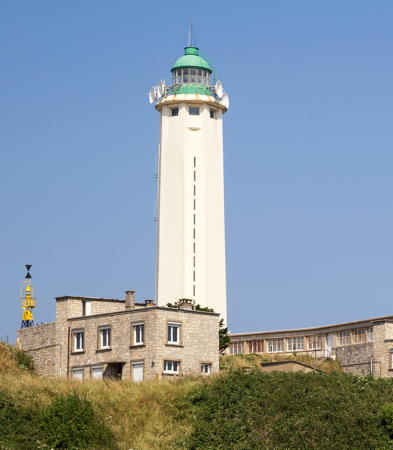
Cap d'Antifer Light, Étretat, July 2018
Wikimedia Creative Commons photo by Unukorno
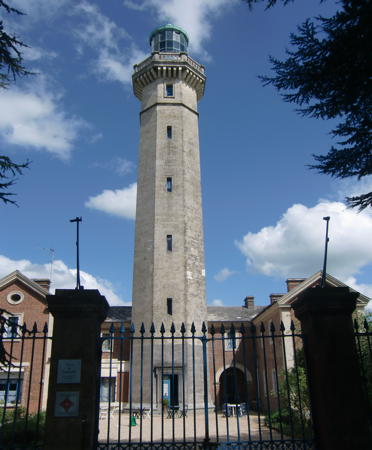
Fatouville Light, Fatouville, May 2012
Wikimedia Creative Commons photo by Gérard Janot
